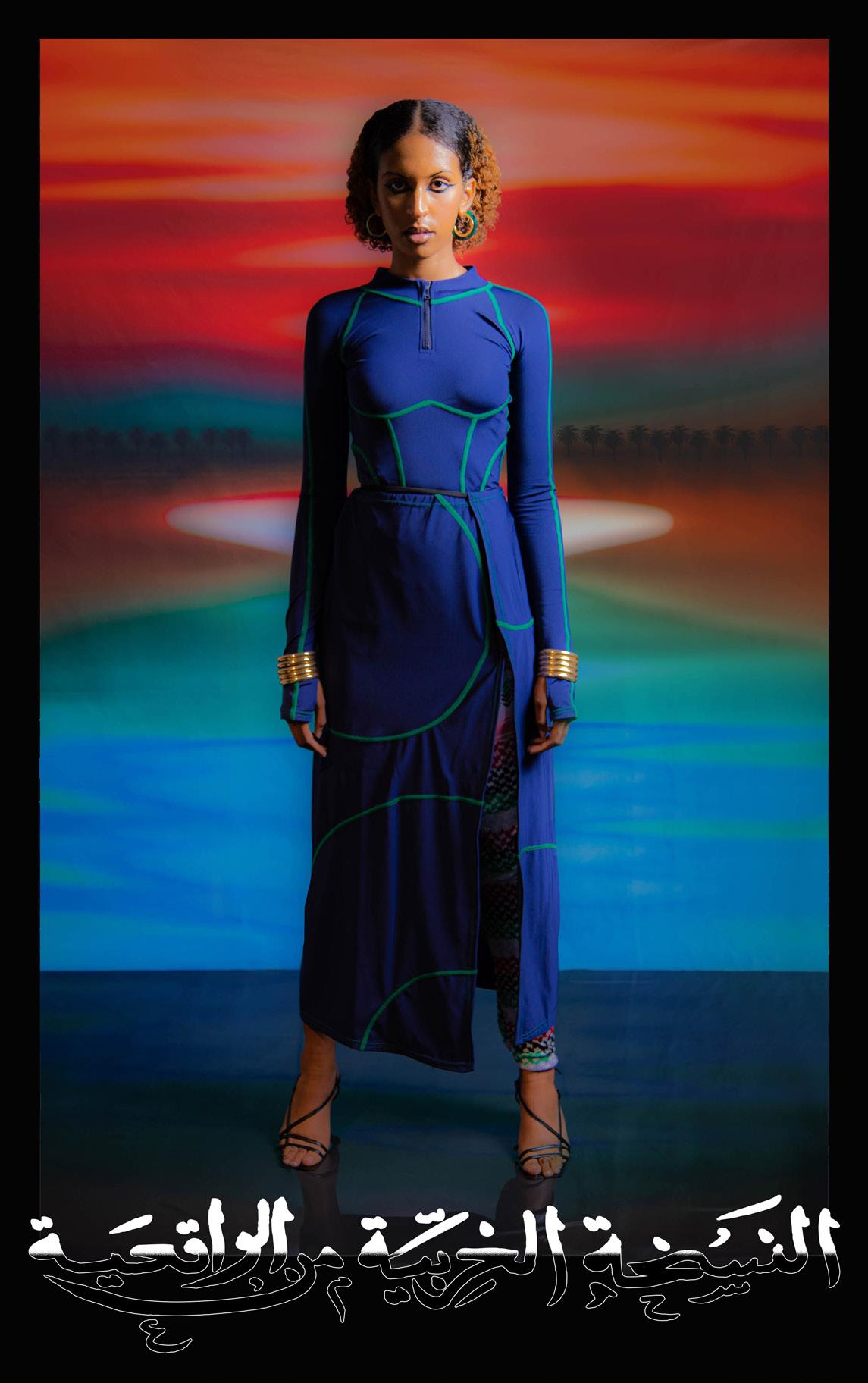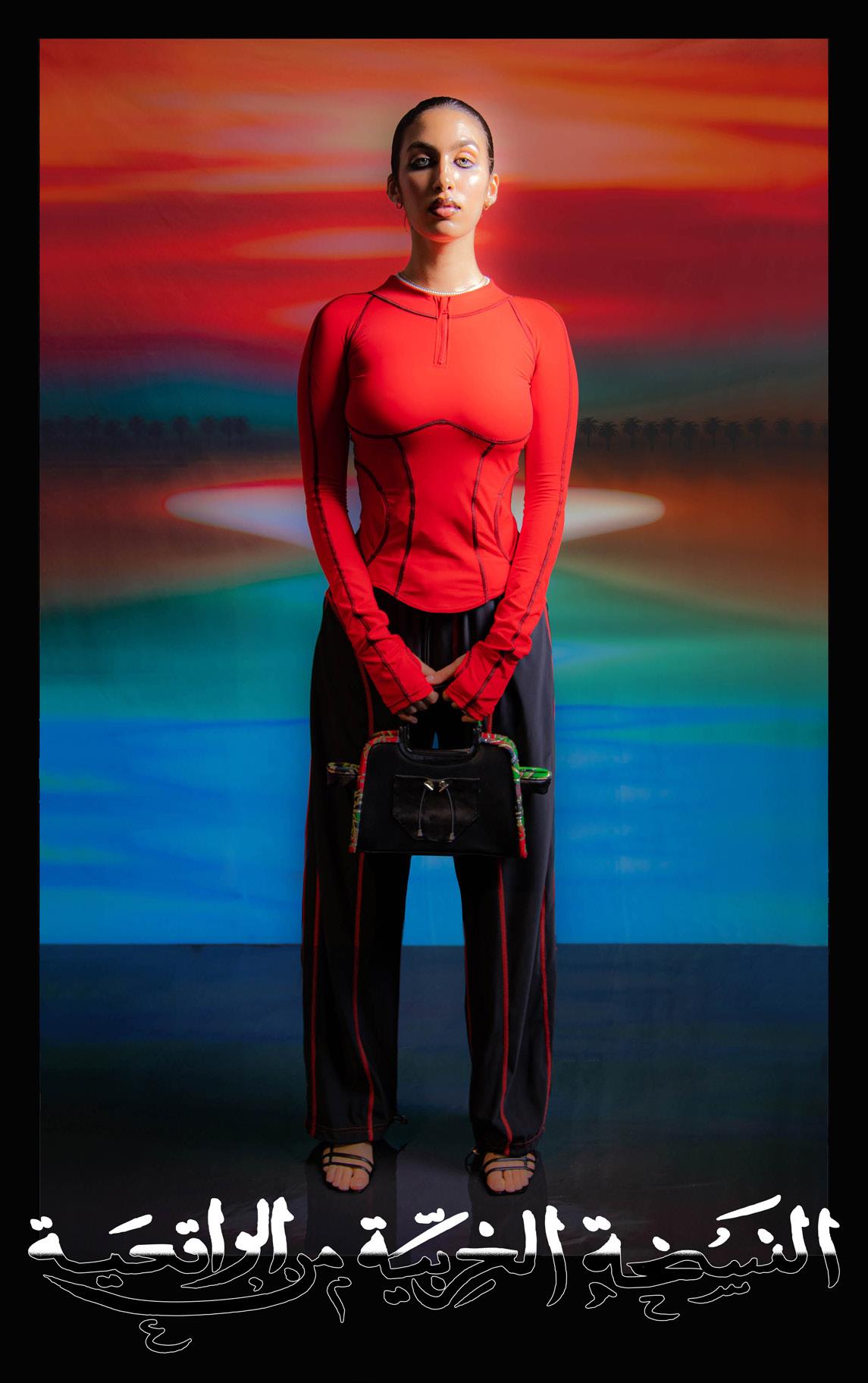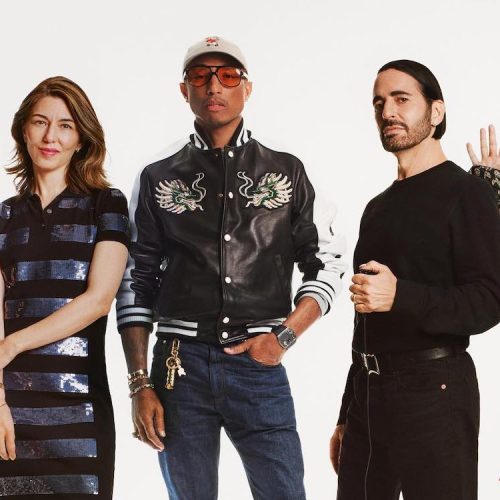If you’re an avid Jorja Smith fan (because, who isn’t?), you’ve probably already seen her sporting Atelier Mundane’s striking looks. They’re hard miss.
The singer has already worn the label’s wrap dress, their Martyrs Corset and of course, the iconic keffiyeh-patterned (and aptly named) Freedom Suit. Iranian-Dutch singer Sevdaliza is also a loyal client – and this was all achieved before even having dropped a collection.
https://www.instagram.com/p/B0EMu2ggmMt/
But it’s not surprising considering that Atelier Mundane simply ticks all the right boxes. From their designs and tailoring down to the quality of the materials they use, it’s every millennial’s dream label. They’re sustainable too. Their Freedom Suit is made from upcycled Palestinian Kiffeyehs, and the leathers they use are vegan.
https://www.instagram.com/p/ByfqjgYhkRH/
If you’re Arab or an immigrant, you can add their mission statement to the myriad of reasons to fawn over the brand: “To disrupt the stigmatisation of the suppressed, and tell the untold stories of immigrants,” as the brand’s Iraqi co-founder Zahra Asmail said when we interviewed her last January.
At the time, Asmail, alongside her sister Sarah and her partner Giorgio Lieuw-On (who founded the label with her) were still in the midst of preparing the launch of their first collection, called MIRAGE VOL1. Nine months later, it’s finally here—and it’s just as remarkable as one would expect. Naturally, we caught up with the London-based trio again to chat about it all.
What inspired this collection?
We started to look at the things we are familiar with and is a part of us, which is our culture and our upbringing and everything else around it. Most of this collection was inspired by our grandparents and our mother. The whole collection consists of the outfits being a suit, this was inspired by how our parents’ generation dressed pre-war times, it was all about tailored two-pieces and figure-hugging garments. Our grandparents were more traditional in that sense, with grandma always wearing an abaya and grandpa in tailored striped suits and a shemagh to top it off.
 You often use cultural motifs in your designs, why is that?
You often use cultural motifs in your designs, why is that?
From a young age we’ve been exposed to our culture. My parents fled Baghdad with me and my siblings during the Gulf War. My first ever memory is of Iraq, the turquoise geometric motifs of the mosques with golden details. This has always resonated with me, the colours, symmetry and the stories behind them. Therefore, we created our own prints based on the Babylonian motif of the flower, symbolising love, life and a bond between everything around us.
Freedom Suit aside, the abaya was an immediate eye-grabber. How’d you get the idea to design one?
It’s already such a significant cultural piece, you go to the mosque; you wear an abaya, it’s hot; you wear an abaya, weddings; abaya. It’s only right to include a garment with such a significant value for women of the region.
 It’s almost like, you’re just… truly representing your culture?
It’s almost like, you’re just… truly representing your culture?
At the moment we feel like there is a spotlight on the Arab world and there are a couple of creators doing wonderful things whilst remaining true to their heritage. We would love to see more representation of the people and the actual culture instead of Arab designers catering to the Western world. Young designers are making a shift towards more real representation which is beautiful and inspiring to see.















